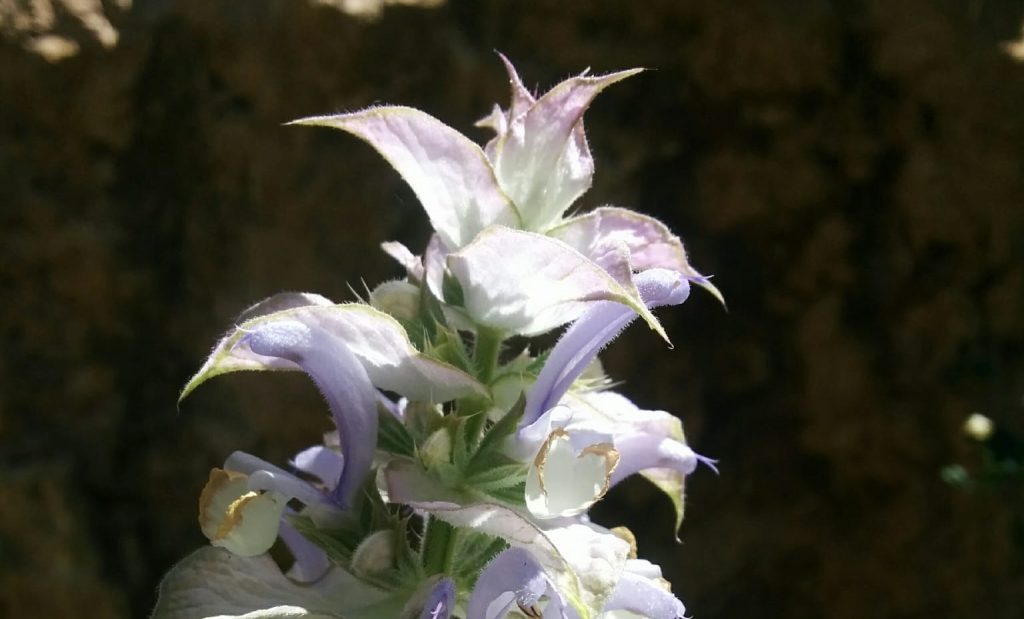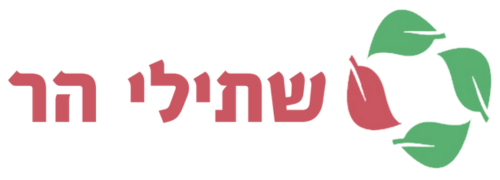
Salvia sclarea – Clary Sage
Family: Lamiacea | Origin: Eastern Mediterranean and Western Asia
This sage is quite rare in Israel, but in recent years it started being distributed in gardening. It turns out to be particularly hardy, very showy when blooming and even spreads easily by seeds.
Clary sage grows in Israel in a few places in the Galilee and the Golan and is known in the wild only by very few enthusiasts. Despite its rarity in the wild, it has proven to be easy to grow: all one needs to do is to sow or plant it in the fall or winter in partial or full sun and water it as a supplement to the rains.
During the winter, a rosette of large, fragrant, slightly wrinkled and hairy leaves develops. These impressive leaves are dark grayish-green in color.
In late spring, tall, dense flowering stems rise, the upper part of which bears dense whorls of light purple or pink flowers with a white lower lip, whose edges are brown, similar to those of blue sage.

Under every 2-3 adjacent flowers emerging from greenish cups, there is a huge, pinkish-white, hairy bract and these bracts are the main components of the large and impressive inflorescence.
The plant dries out in summer and usually dies after the second or third summer of its life, but it reproduces easily from seeds and spreads slightly in areas that are not irrigated and under summer irrigation conditions can even take over small plots.
Like all sages, it attracts wild bees and can be integrated into the wild garden or even the irrigated garden under excellent drainage conditions.
Salvia sclarea is very suitable in rockeries, behind low shrubs, among shrubs and under deciduous shrubs and even in the partial shade of trees.
The leaves of Clary Sage and its flowers were used in the past to season foods, and today the oil extracted from its seeds is used as an additive to oils and food due to its high omega-3 content.
Winter is the perfect season for planting fragrant sage and young plants are normally available with us in the winter months.
:We also wrote about
לקריאה על מרווה מרושתת בעברית לחצו כאן

